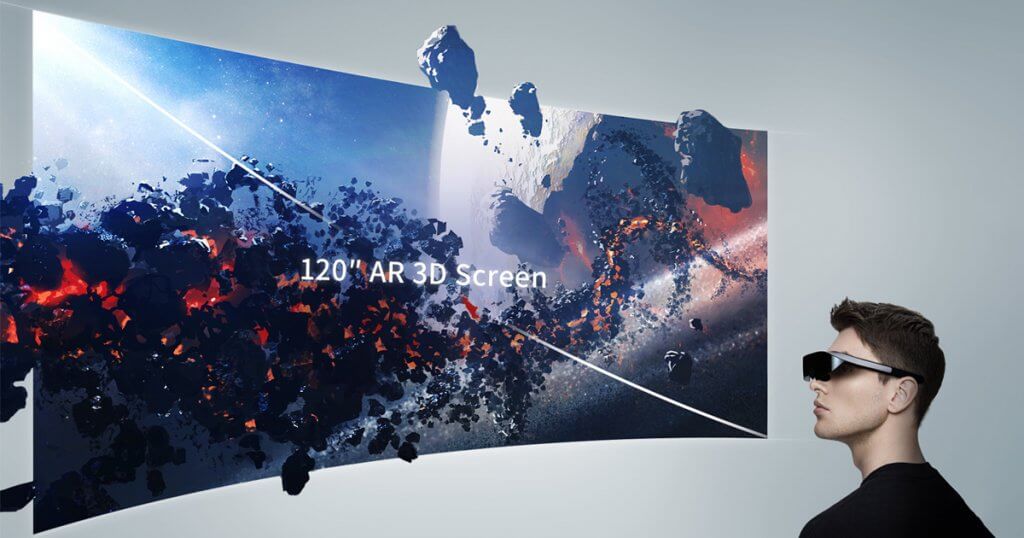There is a growing number of AR and MR glasses on the market today but virtually all of them have virtually no appeal or support for consumers. EM3 is looking to change that with their STELLAR glasses that recently exploded through their Kickstarter goal and are expected to ship in June.
Rethinking XR Gaming
VR headsets have been huge for gamers, but AR and MR (with a few notable exceptions) have been harder nuts to crack. This could largely be because of the ways in which we have been thinking about AR and MR gaming.
Virtual reality creates a digital world that the gamer moves in. AR and MR games have sought to flip this model by placing virtual elements in the user’s world. But, what if we’ve been missing a simpler solution?
Virtual screens have been a growing trend in enterprise XR. Last year’s F8 mentioned them as an upcoming feature on Oculus headsets, and they’re the key intended use case for the A3 MR glasses that ThinkReality announced at CES. But, why should virtual screens only be for productivity?

While a virtual screen may not seem as thrilling or immersive as the more futuristic view of AR and MR gaming that many of us may have, think about it for a moment. There’s no need for worldmapping. The rendering and computing is all done off-device. It works with rather than against limited fields of view. In a way, it’s perfect. So, why hasn’t it been done?
EM3 has done it.
The EM3-STELLAR MR Glasses
EM3’s work until recently could be best described as research. They have developed engines for graphics computing, near-eye displays, and other software but nothing that users could put their hands on until the STELLAR. The MR glasses’ compact design is achieved through these and other software developments, as well as EM3’s approach to how consumer AR should work.
“Mixed and augmented reality headsets and glasses have been on the market for some time, but none of them have been designed in a lightweight and comfortable form factor that make them truly portable or discrete,” Stellar, the headset’s eponymous designer said in a release shared with ARPost.
Designed with gaming and other entertainment content in mind, the 107g MR glasses offer a 53-degree field-of-view Sony micro-OLED display, onboard surround-sound audio and microphone, and vibration feedback. The high pixel-density display with a 60Hz refresh rate is described as being comparable to viewing a 120in HD screen.
“Our goal with STELLAR was to create an incredibly immersive 4K viewing experience that could go with users anywhere and look good doing it,” read the release. “STELLAR has innovative technology that makes the digital viewing experience spectacular, but they also consider style and comfort.”

Using a “plug-and-play” input method, the glasses are reported to be “universally compatible with phones, computers (…) and game consoles” as well as drones with video capture capabilities. The MR glasses offer this ubiquity by using the display as a virtual screen for whatever content is being processed on the external device.
Expect Them This Summer
The EM3-STELLAR MR glasses appeared on Kickstarter in January 2021 and had crashed through the project’s $30,000 goal in a matter of days. EM3 projects that the glasses will ship in June of 2021.
“Super Early Bird” supporters were promised a set for $500, with the price rising to $600 as the project approached its February 4 deadline. Estimates for the MR glasses’ retail price when the project leaves Kickstarter are not currently publically available.




